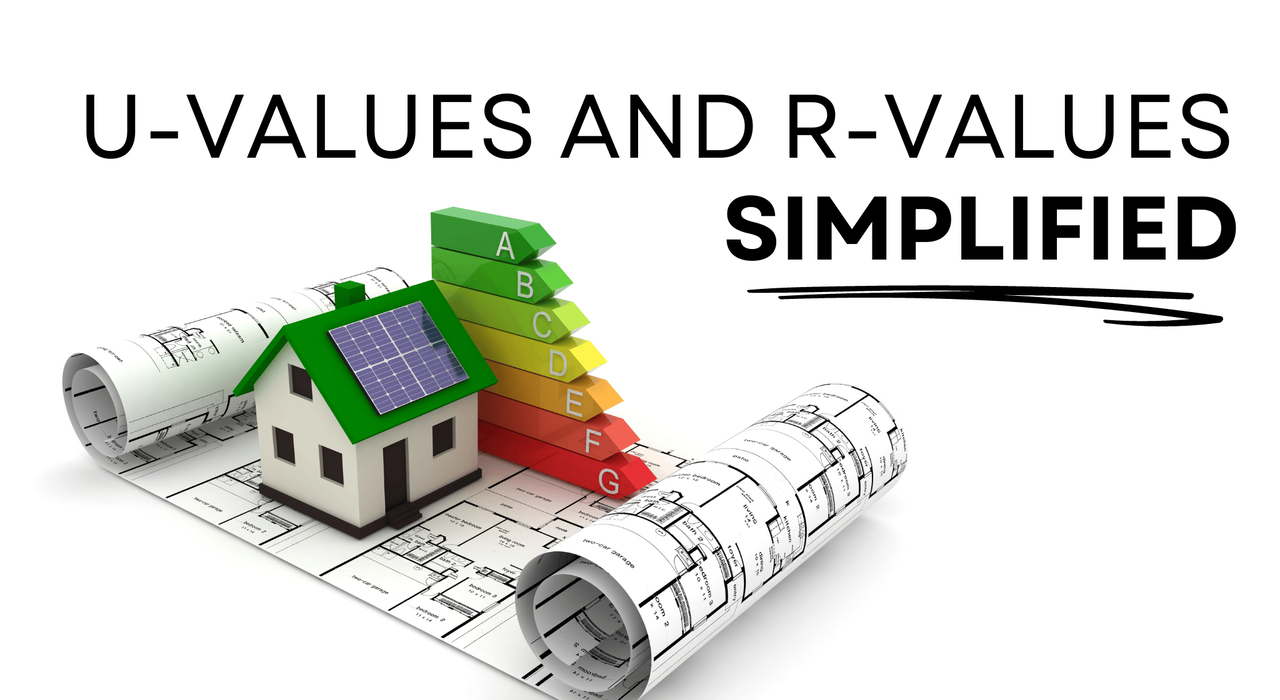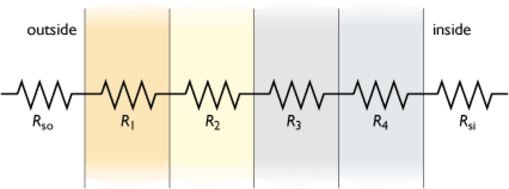
The concept of U-value and R-value in relation to external wall insulation is nothing new. However, it can seem like a daunting prospect to wrap your head around. There are several theoretical concepts behind the calculations. We will discuss U-values, R-values, and lambda values in today's blog.
What are U-values?
U-value is often referred to as thermal transmittance. In essence, it stands for the rate of transfer of heat through a material. When examined as a sum, the U-value stands for the combined thermal resistances of the layers that make up the entire construction; this includes walls, windows, doors, the roof, and the floor. Great consideration is also taken to include adjustments for any fixings and air gaps. These are thermal bridges or cold bridges, which present an avenue for heat to transfer away from the thermal envelope.
U-values are expressed in units of W/m²K; the lower this value is, the better insulated the building is. Therefore, with better insulation comes better thermal efficiency and retention, leading to lower bills. Building regulations and standards dictate that the U-value of new builds and retrofits should be 0.3W/m²K. U-value includes the three major ways in which heat loss occurs - conduction, convection, and radiation.
Conduction is the process by which heat energy is transmitted through molecules. Convection is the process by which heat is transferred by the movement of a heated fluid like air or water. Radiation does not require a medium for transmission as it moves via electromagnetic waves. For example, let us take a pot of water above a flame. Firstly, conduction would take place through the handle towards your hand. Secondly, convection occurs within the pan as the warmer water cycles inside to transfer heat energy. Lastly, radiation is emitted directly from the flame and dissipates into the surrounding environment.
What are R-values?
The R-value is a value that indicates how good a material is at resisting the flow of heat. Therefore, a higher R-value in insulation materials translates to better thermal performance. R-values tend to form the first step when you consider investing in insulation, as it is easier to calculate than the U-value. However, it only considers conduction as the form of heat energy transfer.
Several factors affect the R-value; it is also determined by the material, thickness, and density of the product. Unlike thermal conductivity, thermal resistance (R-values) solely depends on the material’s thickness. Thicker insulation has a higher thermal resistance and lower thermal conductivity.
What is a lambda value?
Lambda value or K-value may seem identical to the U-value in that it concerns a product's thermal conductivity. However, the lambda value is specific to the material in question, whereas the U-value is concerned with the thermal conductivity of the whole construction. The lambda value is represented by the Greek letter 'λ' and is used throughout the industry in thermal calculations. The lower the lambda value of the insulating material, the better the insulation efficiency will be. In practical terms, it represents the amount of energy that can penetrate 1 metre of the material if the temperature difference is 1 degree.
Putting it all together - R-values into U-values
The exercise aims to determine the U-value and begins with examining the lambda value of each material layer used. The whole construction will have several layers, including internal plaster, brickwork, basecoats, adhesives, insulation, and render. All of these impact the U-value as they all possess independent R-values; moreover, there is a thin film of air on either side of the envelope that acts as an insulant. The layers of air are indicated by the Rso and Rsi labels bracketing the physical materials in the construction. The thin layers have values of 0.06W/m²K and 0.12W/m²K for the internal and external surfaces, respectively.
The first step is to determine the R-value of each of the layers. To resolve this, divide the material thickness by the lambda value.
Once the R values are established, they can be plugged into the following equation to determine the U-value. The R-values then need combining to determine the R-value of the entire construction. At this stage, you should incorporate external walls, floors, the roof, windows, doors, and the rest of the building assembly. Dividing 1 by the combined R-value will result in the U-value. The values are the inverse of each other, as a higher R-value results in a lower U-value, and in that, they combine to reduce the heat loss of the property. They are also inverse because the below calculation can be reversed; to calculate the R-value, divide 1 by the U-value.
Insulation, U-values, and R-values
Insulation will add another layer to the overall assembly. External wall insulation boards will come with their own R-value which will contribute to the overall lowering of the U-value. The thickness will inevitably play a part in how much insulation is installed, as different forms of insulation require different thicknesses to achieve a U-value of 0.3W/m²K.
At EWI Store, we stock three different forms of insulation boards, which all carry different thermal conductivity and R-values:
| Thermal conductivity | R-value | |
| Mineral Wool | 0.036W/(m2K) | 1.39W/(m2K) |
| EPS | 0.032W/(m2K) | 1.97W/(m2K) |
| Kingspan K5 | 0.021W/(m2K) | 2.5W/(m2K) |
Based on the figures above, we have determined the thickness required to achieve the final U-value of 0.3W/m²K. However, this can vary depending on the substrate you are using, as cavity walls or ICF builds will have different starting values. Most assemblies will also have varied layers to them, all with separate R-values. Despite this, we recommend the following: Mineral Wool at 110mm, EPS at 90mm, and Kingspan K5 at 60mm. The products also hold other benefits that extend beyond thermal insulation.
Mineral Wool - Dual density composition provides a strong and sturdy base for the render finish, whilst the open porous structure traps sound waves to provide acoustic insulation for the property. Mineral Wool also has a fire rating of A1, actively acting as a fire break feature in buildings.
EPS - A cost-effective solution that does not sacrifice thermal performance. EPS boards are also extremely light, easy to handle, and easy to cut with the EWI Store range of EPS wire cutters.
Kingspan K5 - Premier space-saving insulation boards of phenolic composition. Also possesses extra resistance to mechanical impact due to higher compressive strength.
Finally, if you have any other questions about U-values & R-values, leave us a comment below.



